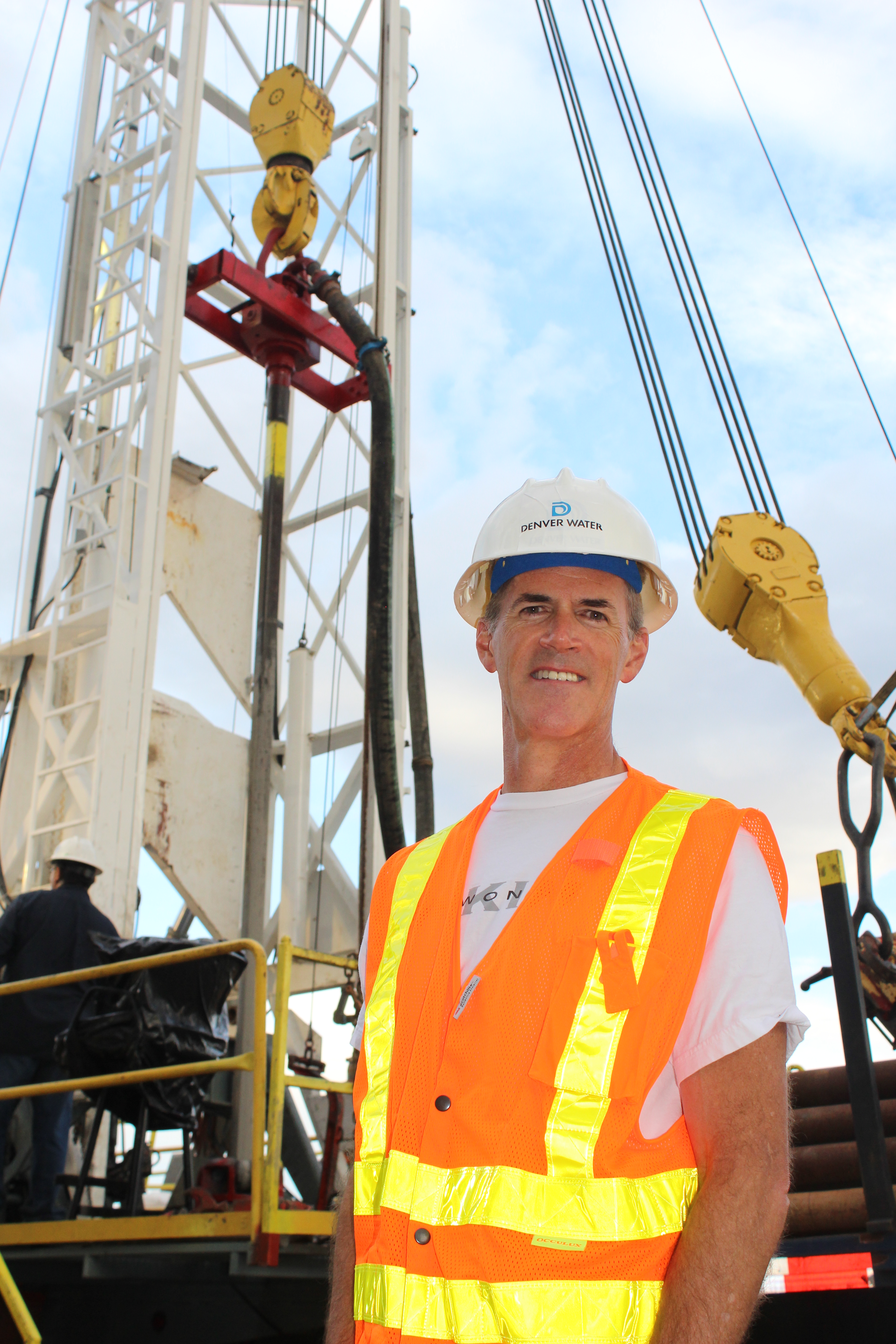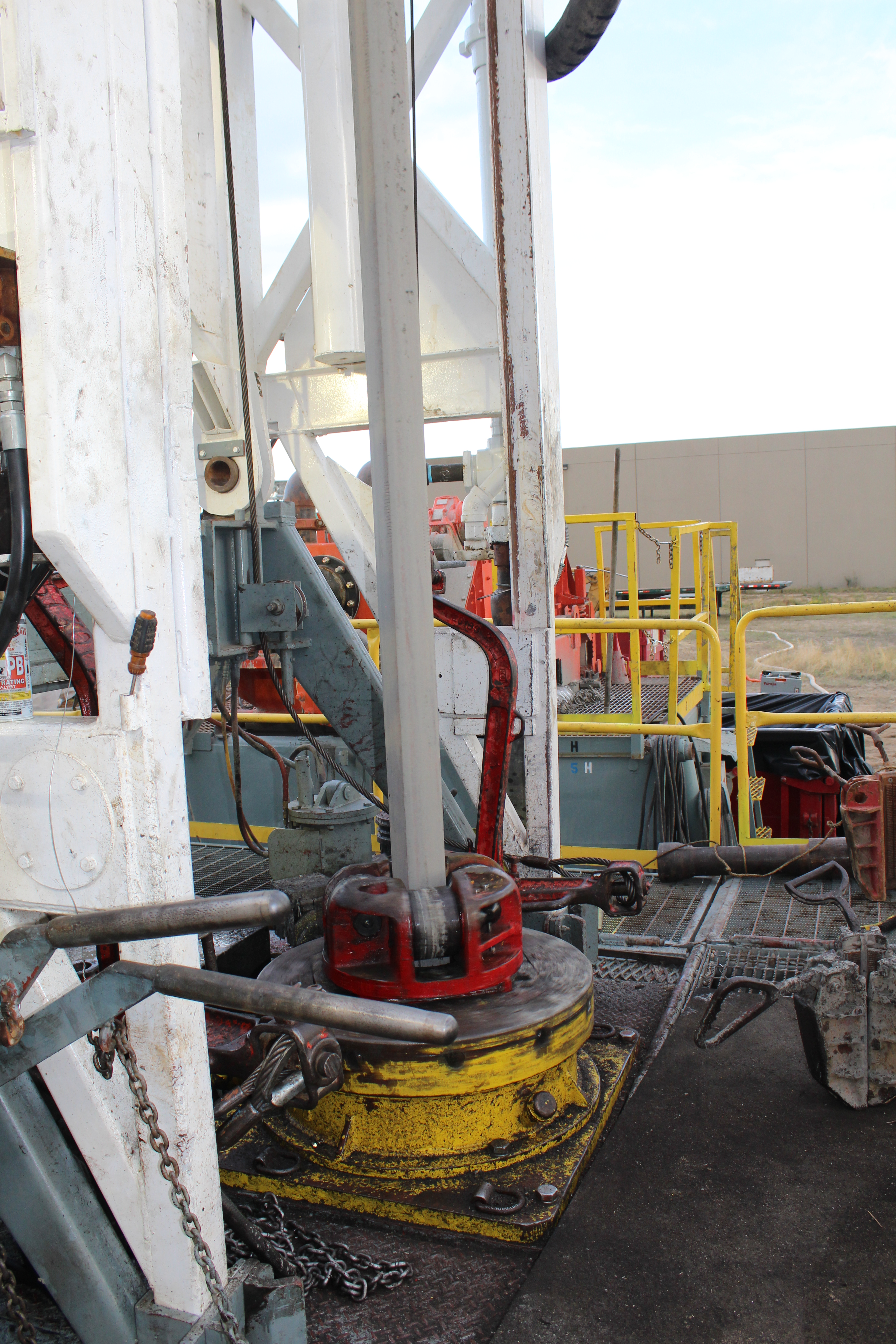
Big drilling rigs in Denver: It’s not what you think
For the past century, Denver Water has looked to our mountain reservoirs to store water. But there may be another way to save our most precious resource for future use — right under our feet.
This fall, Denver Water will drill boreholes at four locations in Denver to test a process known as Aquifer Storage and Recovery, or ASR. The technique involves pumping treated water underground into aquifers during wet years and pumping it back up to the surface in times of drought.
Denver Water drilled four boreholes in 2015, but engineers determined additional samples were needed to gather more information about the rock under Denver.
“There are years when our reservoirs fill and spill,” said Bob Peters, water resource engineer for Denver Water. “Those are the years when we would take water from our distribution system and store that water underground.”
Storing water in underground aquifers may provide another option as part of Denver Water’s long-term strategy to prepare for future demand challenges including population growth and climate change.
“We might see very large gaps between our supply and demand as we look into the future, so we need to look at all possible water storage options,” said Peters.
Crews are drilling down into the Denver Basin, a collection of aquifers that can stretch more than 2,000 feet under the surface, to investigate the basin’s water-bearing and storage capacity. The basin covers an area of roughly the size of Connecticut, stretching from Greeley to Colorado Springs and from Golden to Limon.
The tests are necessary because few details are known about the rock formations under Denver.
Geologist Cortney Brand, vice president of strategic growth at Leonard Rice Engineers, is working with Denver Water on the project. He compares the rock underground to a sponge. “We know the rock can hold water. We want to know if it’s economically feasible to put water in and take it out,” Brand said.
Aquifer water storage is a more sophisticated version of what people have been doing for centuries. Projects are currently in use or under study by several communities along the Front Range, including Colorado Springs, Highlands Ranch and Castle Rock.
There are two misconceptions about the big rigs people in Denver may see this fall:
No. 1: This is not fracking. While rigs may look similar to oil and gas rigs in northern Colorado, Denver Water is not fracking. “All we’re doing is collecting data on the groundwater aquifers that are right below our feet,” Peters said.
No. 2: Denver Water has no plans to tap into the basin for additional water supply. This project is entirely about finding a place to store excess surface water for when we might need it, Peters said.
“There are a number of benefits to underground storage,” Peters added. “You don’t have to build a new dam, it’s comparatively less expensive, there’s minimal impact on the environment and there’s less evaporation.”
The additional findings will help determine if using the aquifer for storing and extracting water is economically feasible. If results of the new bore tests are promising, Denver Water will decide whether to build a pilot well facility to continue studying the feasibility of ASR. This facility could be operational by 2019.
“This is future water supply planning in action,” Peters said. “There are always uncertainties that we need to deal with. We have to leave no stone unturned. We’re just looking to make sure our customers always have water.”


